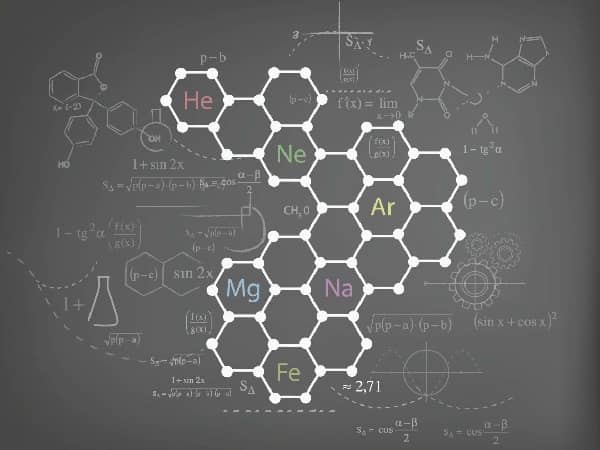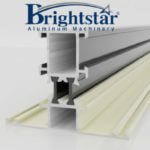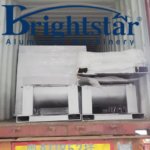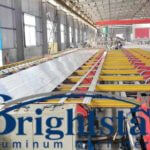A brief discussion on the influence of impurity elements on aluminum alloy
A brief discussion on the influence of impurity elements on aluminum alloy
Aluminum alloy is composed of aluminum and various elements.
In addition to aluminum, various elements have different effects.
Among them, the elements that are harmful to the structure, performance and surface quality are called impurity elements, so we should try our best to understand the impurity elements and ensure their normal content, thereby ensuring better performance.
With the continuous development of science and technology, aluminum alloys account for an increasingly higher proportion of our lives, and people have higher requirements for the performance of aluminum alloys.
Under various process conditions, people improve the performance of aluminum alloys by adding various trace elements.
The main elements in aluminum alloys are Zn, Cu, Mg, Si, Mn, Li, etc., micro-alloying elements include transition metals Zr, Mn, Cr, V, Ti(B), etc., and impurity elements include Fe, Si, Na, Ca, etc.
Many of the impurity elements will have different effects on aluminum alloys in different contents and environments.
Impurity element Fe
Iron mainly exists in the form of FeAl3 needle-like compounds, which significantly reduce the toughness and corrosion resistance of the alloy, and worsen the machining performance, and the fluidity of iron will affect the smoothness of the surface of the extruded aluminum profile.
When the silicon content in the alloy is greater than iron, the β-FeSiAl5 (or Fe2Si2Al9) phase is formed, and when the iron content is greater than silicon, α-Fe2SiAl8 (or Fe3SiAl12) is formed.
Iron is added as an alloying element in Al-Cu-Mg-Fe series and Al-Fe-V series heat-resistant aluminum alloys.
When the ratio of iron and silicon is improper, it will cause cracks in the casting.
When the iron content in cast aluminum is too high, the casting will become brittle.
In the die-casting aluminum alloys, the Fe content is allowed to be less than 1%.
This is to prevent mold from sticking and increase the wetting and fusion ability of the alloy.
In 3-series aluminum alloys, Fe can dissolve into MnAl6 to form the (MnFe)Al6 phase, reducing the solubility of Mn in aluminum.
In 7 series aluminum alloys, Fe can reduce the corrosion resistance and mechanical properties of the alloy.
Impurity element Na
Sodium is almost insoluble in aluminum, with a maximum solid solubility of less than 0.0025%.
When sodium exists in the alloy, it is adsorbed between dendrites or grain boundaries during the solidification process.
During thermal processing, the sodium on the grain boundaries forms a liquid adsorption layer, resulting in brittle cracking, which is called “sodium brittleness”.
When silicon is present, a NaAlSi compound is formed, no free sodium exists, and “sodium brittleness” does not occur.
When the magnesium content exceeds 2%, magnesium takes away silicon and precipitates free sodium, causing “sodium brittleness”.
Therefore, sodium salt fluxes are not allowed for high-magnesium aluminum alloys.
In casting Al-Si alloys, sodium can be used as a modifier to refine the eutectic Si to improve the strength and toughness of the alloy.
The addition amount is 0.01% to 0.014% Na.
Element Ca
Calcium is an impurity in aluminum alloys.
Its solid solubility in aluminum is extremely low.
The formation of CaAl4 compounds with aluminum will reduce the hardness of aluminum alloys.
Calcium and silicon form CaSi2, which is insoluble in aluminum.
Since the solid solution amount of silicon is reduced, the electrical conductivity of industrial pure aluminum can be slightly improved.
Trace amounts of calcium are beneficial to removing hydrogen from molten aluminum, and have a small effect in lowering the eutectic temperature of aluminum alloys and refining eutectic silicon.
However, it is generally not used as a modifier and is only used in the melting and heat preservation of aluminum alloys.
It is used as an anti-oxidation and deoxidation flux.
Calcium is the superplastic element of aluminum alloys.
Aluminum alloys containing approximately 5% calcium and 5% manganese are superplastic.
Calcium can improve the cutting performance of aluminum alloys.
In die-casting aluminum alloys, adding 0.01% to 0.03% Ca can significantly increase the wetting and fusion ability of the alloy liquid, reduce cold isolation, and avoid mold sticking.
Alloying element Si (main element, impurity element)
Silicon is added as an alloying element in Al-Mg-Si alloys, Al-Si casting alloys and Al-Si welding rods (4XXX).
In other aluminum alloys, silicon is often an impurity element.
If magnesium and silicon are added to aluminum at the same time to form an Al-Mg-Si alloy, the strengthening phase is Mg2Si.
The mass ratio of magnesium to silicon is 1.73:1.
When designing the composition of the Al-Mg-Si alloy, the magnesium and silicon contents are basically configured in this ratio.
In order to improve the strength of some Al-Mg-Si alloys, an appropriate amount of copper is added, and an appropriate amount of chromium is added to offset the adverse effects of copper on corrosion resistance.
Si usually exists as an impurity element in the 2, 3, 5 and 7 series aluminum alloys.
In the 3 series alloy, silicon forms T (Al12Mn3Si2) or (AlFeMnSi) phase.
If Fe and Si exist at the same time, α-Al12Fe3Si2 and β-Al9Fe2Si2 phases will be formed first, which will destroy the beneficial influence of Fe.
Si reduces the strength of the alloy in 7 series alloy and increases the tendency of welding cracks.
Conclusion
Various elements in aluminum alloys have a great impact on the structure and properties of aluminum alloys.
Various elements have different effects in different alloys.
These require us to further explore the effects of elements for better use and control.
Brightstar Aluminum Machinery offers not only molten aluminum electromagnet iron remover, but also aluminum dross machine.
They provide the solution for increasing the aluminum recovery rate and improving the quality of your finished products.
Contact them now to obtain a reliable No-obligation quote!
Get A Reliable No-obligation Quote










